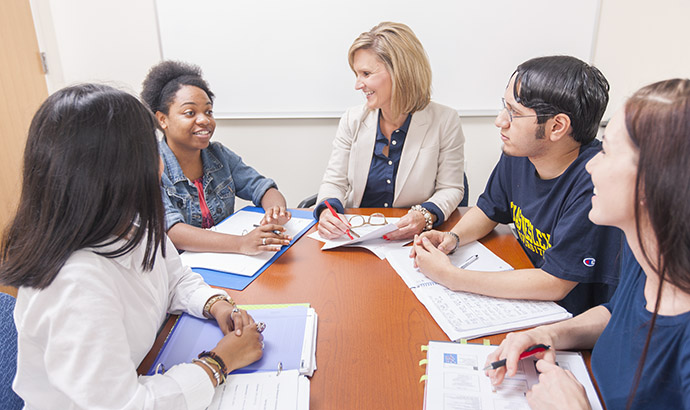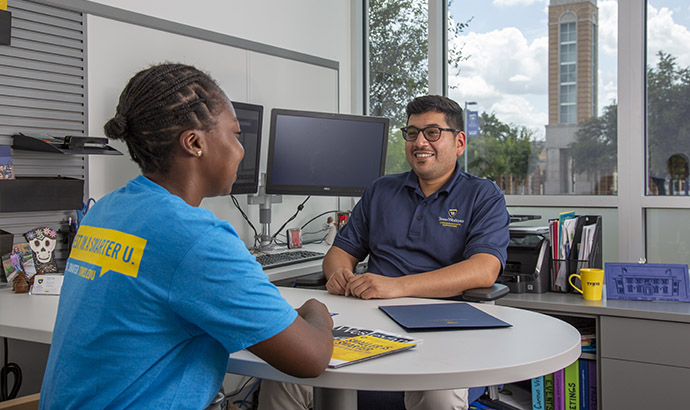Beyond Grades: Empowering Learning Through Assessment
.jpg)
According to The Glossary of Education Reform, assessment is the wide variety of methods or tools that educators use to evaluate, measure, and document the academic readiness, learning progress, skill acquisition, or educational needs of students.
Through this article, we will explore why we use assessments in the learning process, discuss how we use assessments, and discover the best strategies and practices in assessment.
Why do we assess?
When we hear the word assess, we naturally think “test.” We think “exam.” Beads of sweat come across our forehead, we start to twitch, and anxiety sets in. Refer back to the definition from above and focus on specific words: evaluate, readiness, measure, learning, progress. Assessments are not required to be multiple choice questions in a dimly lit room with nothing but a scantron and a #2 pencil. In essence, assessments can:
- guide instruction
- determine if learning outcomes have been achieved
- determine direction of instruction
- promote self-directed learning
- evaluate course and teaching effectiveness
- provide real-world application
Level of Assessment
Take the time to pull out one of your current assessments. This could be a traditional exam, response questions, or a project. Now, let’s go back to the beginning. Look at the questions and the prompts. Take it back to Bloom’s. What level is each one at?
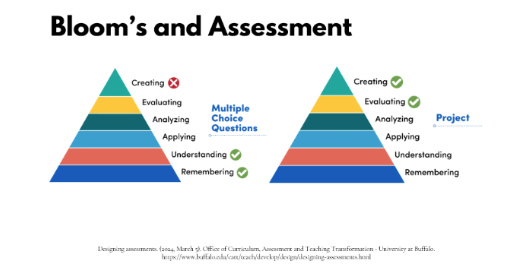
Evaluate your own assessment. Is it at the evaluating or creating level? Is it sitting at remembering or understanding? What is the purpose of the assessment? Does the purpose and goal of the assessment match the level of Bloom’s Taxonomy that it is at?
The Process
The process of assessment and creating assessments can be seen as cyclical. We start with the end in mind: what are the outcomes that you want at the end of the process? Then, what does the instruction to get to that point look like? We then run the assessment, review the results, and then see what improvements are needed. From there, we then determine our next set of outcomes. Does something need to be revisited and reassessed?
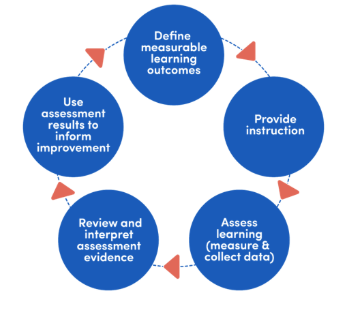
Designing assessments. (2024, March 5). Office of Curriculum, Assessment and Teaching Transformation - University at Buffalo. https://www.buffalo.edu/catt/teach/develop/design/designing-assessments.html
Formative vs. Summative
Although there are other types of assessments, we can break it down into two categories.
An assessment is formative when evidence is gathered about student achievement or understanding. This information allows the instructor or learner to alter future instructional steps and is done to improve learning outcomes (Black & William, 2009). Think of this as “forming” the learner and expanding their knowledge base.
On the other hand, summative assessments occur after the completion of learning activities (“in summary...at the end”) and they assess student achievement, ultimately reflecting the impact of course activities.
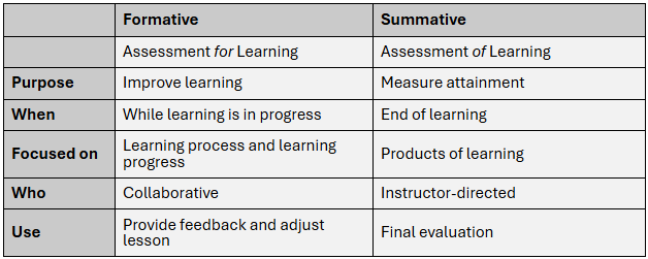
Best Practices
- Align to the CLO (Course Learning Objectives)
- Ensure that the level of learning is appropriate for the course
- Balance between formative and summative assessments
- Provide ongoing and varied methods of assessment
- Set expectations for performance
- Provide a clear rubric and clear instructions
- No “gotchas”
- Scaffold where needed
- Discuss/explain academic integrity and expectations for AI use
- Explain the format and structure for any high-stakes assessments
- Provide rubrics ahead of time for students to self-evaluate
- Allow for opportunities for students to respond to feedback (instructor and peer) and revisions
- Allow students to make personal connections as well as real-world connections
- Phrase feedback to be constructive and actionable.
Need some ideas?
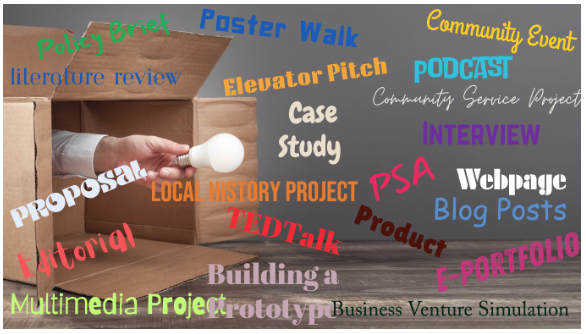
Feedback
“Feedback should never come off as judgment. Instead, it should uplift learners, challenge them to think differently, deepen their understanding and build their confidence.” Andrew Shean
When providing feedback, remember that it should be educative in nature, given in a timely manner, and sensitive to the individual. Provide comments that are specific to either the positive or the improvement needed. Avoid a generic “good job” or “needs improvement” as the learner benefits from feedback the gets to the point. Give the learner something that they can learn from and take with them.
In deciding a delivery style, think about the impact that a personal method could have. Delivery could be individual, whether it is written, audio, or video. Effective feedback can also be given to the class as a whole or from peer-to-peer.



